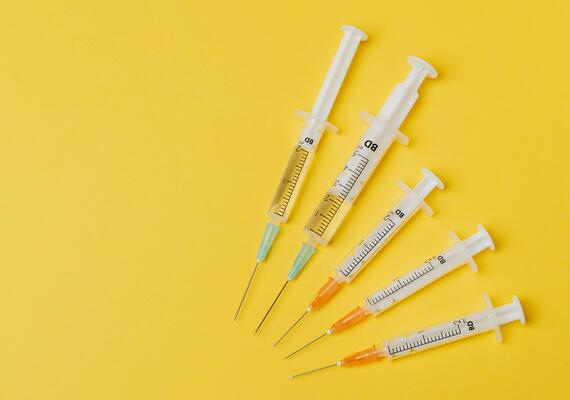In today's video, we discussed intramuscular and subcutaneous injections in small animal patients. We also explored the different sites we use, and what special considerations we need to have for our feline patients!
Injection Supplies

Syringes
There are are different sizes of syringes available depending on the amount of medication we need to inject into a patient. For vaccines in our canine patients, for example, core vaccines are usually 1mL that is injected intramuscularly, so we would use a 3mL syringe. For our feline patients, vaccines are usually 0.5mL to 1mL, so we could use a 1mL syringe or a 3mL syringe.

Needles
Different medications require different needle gauges depending on: where they are being injected, how thick the medication is, and the type of animal we are treating. When giving vaccines to our small animal patients, we'll usually use a smaller gauge needle, like a 25G. If we were giving something like subcutaneous fluids, we might use an 18G or 20G needle, depending on our patient, to allow the fluid to flow easier with less pressure buildup.
Intramuscular Injection
- Used in both canine and feline patients.
- We can inject into the: epaxial muscles, triceps, and quadriceps muscle groups. Do you remember where these are from your anatomy lesson earlier?
- In our small animal patients, 22, 25, and 20 gauge needles are most commonly used for these injections.
- The maximum volume that can be injected in one site is: 1mL in cats and small dogs, and 2-5mL in large breed dogs.
- Because of all the blood flow to these big muscle groups, medication is absorbed fast from these areas in healthy patients.
Subcutaneous Injection
- Used in both canine and feline patients.
- Used for routine vaccinations, subcutaneous fluid treatments, and microchip placement.
- The most common site is the back of the neck, between the shoulder blades.
- Can give much larger amounts of medication or fluid due to the amount of loose skin in the area that can accommodate stretching.
- In cats, the tissue above the stifle (knee) or elbow are preferred because it reduces the risk of developing soft tissue sarcoma, a type of cancer that can occur in feline patients after injection.

